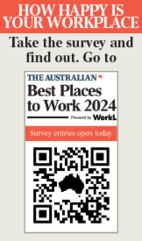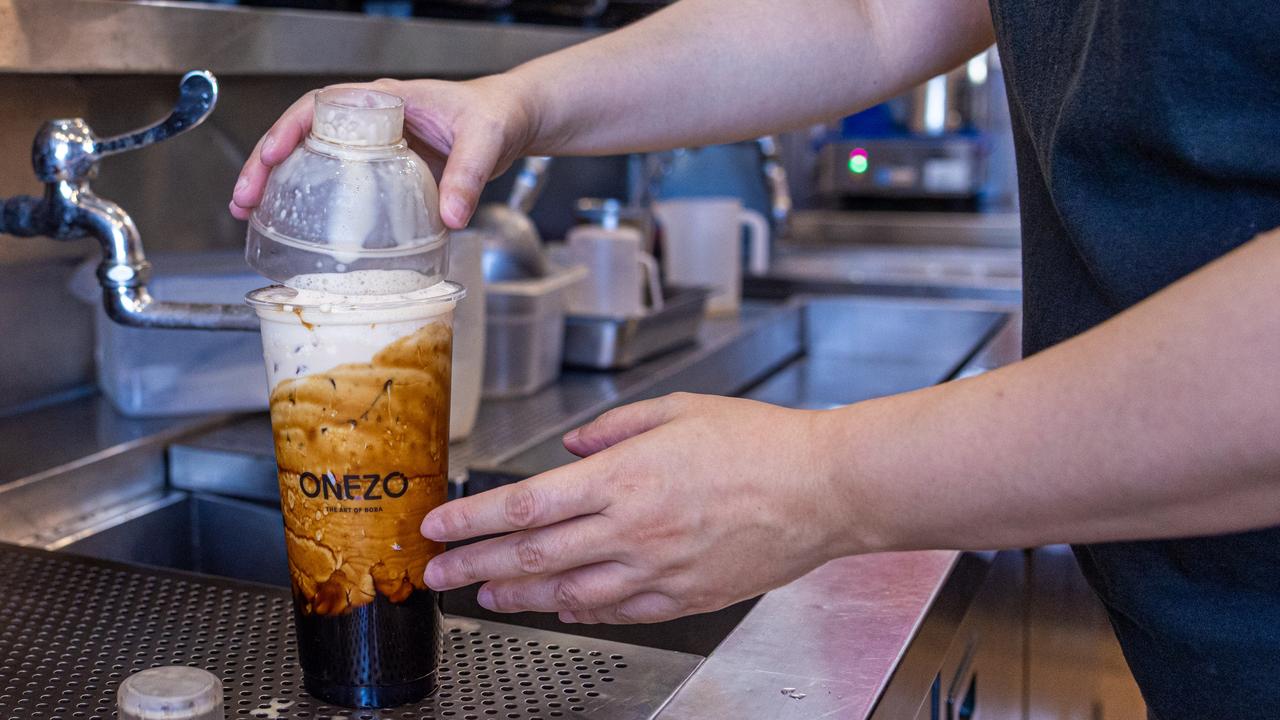Quest to find Australia’s best places to work
The Australian, in partnership with employee engagement platform WorkL, has launched its quest to find the best places to work.

Workplace happiness is worth $14 trillion, about four times the collective value of what Australians hold in their superannuation funds.
That is the cost to the world economy of staff who are not engaged at work, according to a study from advisory and research firm Gallup.
Look at it another way, and it is an opportunity for productivity growth for employers.
In its report released this year, the Gallup global study says the level of engagement at work has risen across the past few years, from a low of 12 per cent in 2009 to 23 per cent last year. But the good news for employers ends there. Only 23 per cent of employees are thriving at work (survey-speak for actively engaged at work); 59 per cent are quiet quitting (not engaged); and 18 per cent are loud quitting (actively disengaged).
Employees who are “thriving at work” find their work meaningful, feel connected to their teams and feel proud of what they do. Those who are quiet quitting are “filling a seat and watching the clock”, putting in the minimum required effort, as they are mentally disconnected from the organisations they work for.
Those who are loud quitting “take actions that directly harm the organisation, undercutting its goals and opposing its leaders”, the Gallup report says, since the trust between employee and employer is broken, and the employee stays on in a role that is “woefully mismatched”.
The Gallup study is a wake-up call for employers: more than 75 per cent of employees are among the quitters – quiet quitters or loud quitters.
Happiness at the workplace is the magic dust that powerfully will turn the profit handle for organisations, keeping employees engaged and productive at work. Smart HR policies designed to retain employees and keep them happy and engaged make sense, especially during times of skills shortage such as experienced now by organisations worldwide.

The Australian, in partnership with employee engagement platform WorkL, has launched its quest to find the best places to work.
“An ideally happy workplace is a journey,” WorkL founder Mark Price says. “It’s hard to achieve it, with the constant churn of managers and employees. It’s one of those things you constantly have to measure and work on.”
In his view, the ideal workplace gets the balance right between the six criteria WorkL measures about the workforce: rewards and recognition; information sharing; empowerment; wellbeing; instilling pride; and job satisfaction. The biggest hurdle organisations face on the road to their own happiness and economic success is flight risk, or the proportion of employees wanting to leave the organisation.
The flight risk in Australian organisations collectively is 43 per cent, which means nearly half of employees are at risk of leaving in the next six months, WorkL says. Flight risk is a cost imposition for businesses as recruiting new talent and keeping them engaged at the workplace is an expensive exercise.
Companies that keep employees engaged reap the benefits of greater productivity, as workplace happiness has become a key indicator of how innovative and profitable businesses can be.
More than 500,000 people have taken the WorkL survey to get insights into how happy they are in their jobs. WorkL provides each of the businesses participating in the survey with a dashboard of granular data about their industry and how they measure up against it in quantified terms of flight risk of their employees. WorkL also provides rich data from the survey results about key demographics such as gender, sexual orientation and age.
It is easy to enter The Australian Best Workplaces 2024 awards – it takes less than 10 minutes for businesses to set up the survey and about five minutes for employees to answer the questions, which cover the six important drivers of employee engagement and happiness. There are 12 main categories of awards up for grabs, and the fee for entering starts at just $1400 for organisations with 10 to 49 employees. Higher fee applies for larger organisations. Entries close on December 15.
Before it releases its list of Australia’s best places to work early next year, The Australian is exploring how major companies are braving the pressures of the economic and market environments in which they operate and thriving.
The details of The Australian Best Places to Work 2024, are here


